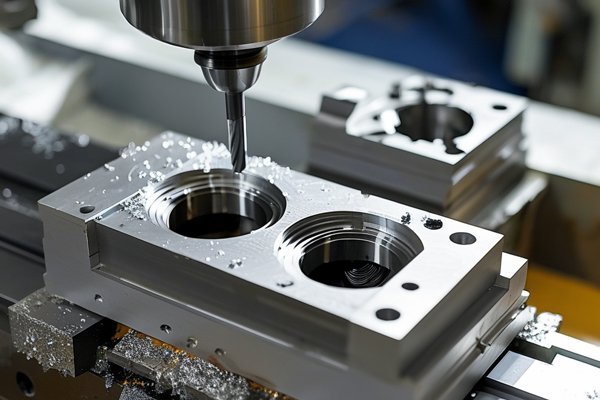Did you know that improper sealing in machined components can lead to leaks that result in multi-million dollar losses for manufacturing industries? According to a report by the National Institute of Standards and Technology (NIST), companies can lose up to 4% of their revenue due to fluid leaks and improper sealing. This staggering statistic highlights the critical need for precision in CNC machining, especially when manufacturing parts that require tight seals.
In this comprehensive guide, we will explore the various factors that contribute to the sealing performance of CNC machined parts. We’ll delve into techniques, materials, and best practices to ensure that you achieve optimal sealing results. Whether you’re a seasoned engineer, a CNC machining novice, or a business leader, understanding how to enhance sealing performance can lead to improved product reliability and customer satisfaction.
Understanding CNC Machining and Sealing Performance
What is CNC Machining?
CNC (Computer Numerical Control) machining is a highly automated manufacturing process where pre-programmed software dictates the movement of factory tools and machinery. The ability to precisely cut, shape, and form materials like metal, plastic, and wood makes CNC machining an invaluable tool in various industries, including aerospace, automotive, and medical fields.
Why is Sealing Performance Important?
Sealing performance ensures that components can effectively contain fluids or gases within a system. Poor sealing can lead to:
Factors Affecting Sealing Performance
To ensure good sealing performance, several factors must be taken into consideration:
Choosing the right material for both the part and the sealing mechanism is crucial. Materials must withstand the operating environment, including temperature fluctuations, chemical exposure, and pressure levels. Some common sealing materials you might consider include:
The surface finish of machined parts plays a vital role in sealing. Rough surfaces can create gaps that allow fluids to escape. Recommended practices for ensuring a smooth surface finish include:
Proper tolerances ensure that mating parts assemble correctly. When parts are machined, they must fit together as designed to ensure effective sealing. Techniques to improve fit and tolerance include:
The design of the sealing component is equally important for performance. Considerations include:
Improper assembly can compromise sealing performance. To ensure effective assembly:
Step-by-Step Guide to Enhancing Sealing Performance
Now that we have discussed key factors influencing sealing performance, let’s dive into a step-by-step guide to improving it effectively.
Step 1: Choose the Right Materials
Start by assessing what materials are best suited for your application. Factors such as:

These characteristics will dictate whether you utilize rubber, PTFE, or another sealing material. Partner with suppliers who can provide comprehensive data sheets to assist you in this selection process.
Step 2: Achieve Optimal Surface Finish
To enhance sealing, ensure that all machined surfaces are polished to the necessary finish. Depending on the material, you may need different techniques:
Evaluate whether you need additional treatments, such as anodizing for aluminum to increase corrosion resistance.
Step 3: Maintain Precision Tolerances
Utilize CNC machining’s capabilities to maintain tight tolerances throughout your production. When creating part designs, examine:
Step 4: Focus on Seal Design
Explore various sealing methods that meet your specific application. Custom seals can often provide better performance than off-the-shelf solutions. Work closely with sealing specialists to ensure designs meet operational demands.
Step 5: Implement Quality Control Measures
Before final assembly, conduct thorough inspections. Utilize a combination of:
For critical applications, consider destructive testing to assess seal performance under operational conditions.
Step 6: Training and Tooling for Assembly
Finally, ensure your assembly team is trained to handle seals properly. Provide necessary tools that aid in accurate assembly, such as torque wrenches for applying the right amount of force during installation.
Common Challenges and Their Solutions
Challenge 1: Material Compatibility
Sometimes, the chosen sealing material doesn’t react well with the fluids they contain, leading to failure.
Solution: Always perform compatibility tests before finalizing your design. Utilize chemical compatibility charts to make informed material choices.
Challenge 2: Improper Handling During Assembly
Inadequate handling can lead to deformation of seals or contamination with debris.
Solution: Develop standard operating procedures (SOPs) for handling and storing seals to prevent damage before use.
Challenge 3: Environmental Variability
Changes in temperature or pressure can affect seals post-assembly.
Solution: Consider environmental factors during the design stage, such as incorporating features that allow fluctuations without compromising sealing.
Case Studies: Successful Implementation of Sealing Techniques
Case Study 1: Aerospace Industry
A leading aerospace manufacturer faced issues with fuel leakage due to poor sealing in their fuel nozzles. They implemented a new CNC machining technique to improve tolerances, selected advanced sealing materials, and incorporated sealing simulations into the design phase. The result was a 30% reduction in fuel leaks, saving the company thousands in repairs and regulatory fees.
Case Study 2: Automotive Sector
An automotive company was challenged with hydraulic system failure due to improper seal fit. After engaging in detailed quality control inspections and rigorous training for assembly line workers, they were able to maintain tighter tolerances and ultimately improved their sealing performance, resulting in fewer recalls and enhanced customer trust.
Achieving good sealing performance in CNC machined parts is a multifaceted problem that requires a keen understanding of material properties, surface quality, design precision, and assembly techniques. By following the structured steps outlined in this guide, you can significantly enhance the sealing integrity of your components.
Understanding the core techniques for sealing performance is essential for not only preventing costly leaks but also for building trust with customers who rely on your products. In an increasingly competitive market, this knowledge can set you apart from competitors and contribute to long-term business success.
Take the time to assess your current processes and implement these recommendations; your bottom line will undoubtedly thank you. Remember, effective sealing performance isn’t just about containment; it’s about delivering reliability, safety, and value in every part you produce.






